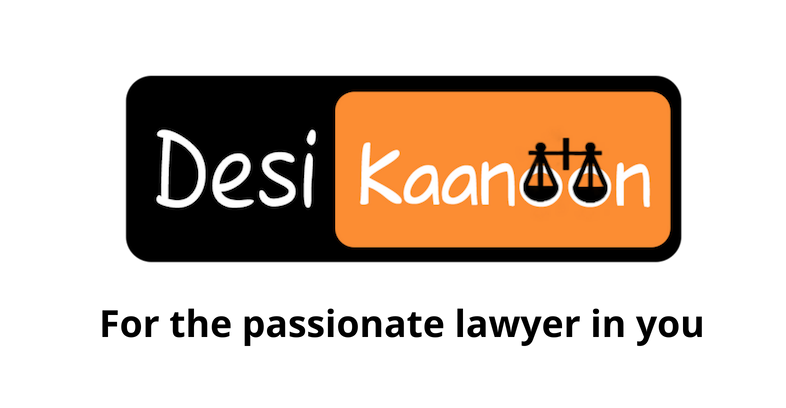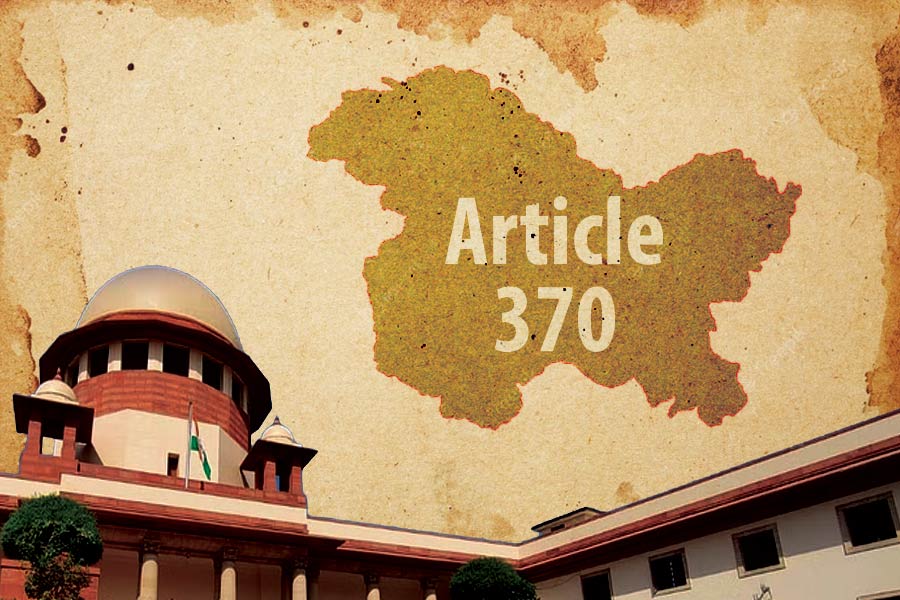Jahanvi Agarwal
| Case Name | In Re: Article 370 of the Constitution |
| Citation | 2023 INSC 1058 |
| Decided On | 11-12-2023 |
| Coram | Justices N.V. Ramana, S.K. Kaul, R. Subhash Reddy, B.R. Gavai and Surya Kant |
| Petitioner | Manohar Lal Sharma; We the Citizens; Dr. Charu Wali Khanna; Mohammed Akbar Lone; Hasnain Masoodi; Shakir Shabir; Anuradha Bhasin |
| Respondent | Union of India |
| Provisions Involved | Articles 3, 370, 35A and 367 of the Constitution |
BACKGROUND OF THE CASE:
On December 11, 2023, the Supreme Court’s Constitution Bench confirmed the Presidential Orders [C.O. 272] and [C.O. 273] issued on August 5 and 6, 2019, which amended Article 367 and abrogated Articles 370 and 35A of the Indian Constitution. This landmark ruling has a profound impact on India’s socio-economic and politico-legal spheres. While some view it as “the final nail in the coffin of secessionists and separatist ideology”, others criticize it as “anti-federal” and contrary to the Basic Structure of the Constitution.
Article 370 stemmed from the Instrument of Accession, signed in 1947 by Maharaja Hari Singh, the then-ruler of Jammu and Kashmir. This agreement integrated the state into India but restricted India’s legislative authority to defense, external affairs, and communication. Article 370 enshrined these conditions, facilitating Jammu and Kashmir’s shift from a princely state to a democratic entity within the Dominion of India.
Article 370 of the Indian Constitution granted Jammu and Kashmir a unique status, distinguishing it from other states. It notably limited the Indian Parliament’s legislative power, placing greater authority in the hands of the Jammu and Kashmir state legislature. This ensured that the residents of Jammu and Kashmir had significant control over their governance, with all applicable laws requiring their consent.
FACTS OF THE CASE:
Following the partition plan of the subcontinent based on religious lines, the Hindu ruler Maharaja Hari Singh of the Muslim-majority state of Jammu and Kashmir opted for a standstill agreement amid the political instability. However, guerrilla attacks from militants in West Pakistan compelled Singh to sign the Instrument of Accession, granting the Indian Parliament authority over three key areas: Foreign Affairs, Defence, and Communications.
Amid this turmoil, Article 370 was established when the Indian Constitution came into effect in 1950. Article 370 stipulated that the provisions of the Indian Constitution, except Articles 1 and 370, would not apply to Jammu and Kashmir. Furthermore, to amend or repeal Article 370, the consent of the Jammu and Kashmir Constituent Assembly was required. Additionally, any application of the Indian Constitution to Jammu and Kashmir required consultation with the state government.
This was followed by the first Presidential Order in 1950, which outlined the subjects applicable to Jammu and Kashmir. In 1954, a Presidential Order based on the Delhi Agreement of 1952 introduced Article 35A, which protected the territorial integrity of Jammu and Kashmir and conferred special rights to its permanent residents, in consultation with the Constituent Assembly of Jammu and Kashmir.
The Constituent Assembly of Jammu and Kashmir was dissolved in 1956, leaving Article 370 open to various interpretations in legal challenges over the next 70 years. Following the political turmoil in 2018, with no party securing a majority, Jammu and Kashmir came under the Governor’s rule in June 2018, which was later replaced by the President’s rule in December 2018. This transition effectively replaced the state’s Legislative Assembly and Governor with the Union Parliament and the President.
On August 5, 2023, a significant change occurred when the President issued Order 272, redefining the ‘Constituent Assembly’ under Article 370(3) as ‘Legislative Assembly’. With no operational legislative assembly at the time, Parliament approved the abrogation of Article 370, except for Clause 1, which ensured that the Indian Constitution would apply to Jammu and Kashmir.
This pivotal moment led to a surge of writ petitions against the Union government in the Supreme Court. Recognizing the gravity of the situation, the Court decided on August 28 to refer the matter to a Constitution Bench for further deliberation.
ISSUES RAISED:
- Is Article 370 a temporary provision of the Constitution of India?
- Can Article 367 be used to amend the meaning of “Constituent Assembly” to mean “Legislative Assembly?”
- Can the President strike down Article 370 without the recommendation of the Constituent Assembly of Jammu and Kashmir?
- Is the Jammu and Kashmir Reorganisation Act, 2019 which bifurcated J&K into two Union Territories constitutionally valid?
ARGUMENTS ADVANCED:
The petitioners argued that Jammu and Kashmir’s unique socio-political history warranted a distinct status, but the Supreme Court firmly maintained that the state did not possess sovereignty but merely enjoyed special autonomy. The petitioners claimed that the retention of Article 370 after the dissolution of the Constituent Assembly made it permanent.
They also argued that imposing Article 356 would only transfer legislative, not constitutive, powers to Parliament. Applying the doctrine of colorable legislation, the petitioners contended that “what cannot be done directly, cannot be done indirectly.”
They asserted that the President had indirectly amended Article 370 without the Constituent Assembly’s concurrence by substituting ‘Constituent Assembly’ with ‘Legislative Assembly’. Additionally, they argued that the Jammu and Kashmir Reorganisation Act, 2019, was unconstitutional under Article 3, which allows Parliament to form new states and alter state boundaries but does not permit downgrading a federal democratic state to a Union Territory.
They further claimed that in a federal democracy, the right to autonomous self-government concerning constitutional and political status is a fundamental right under Part III of the Constitution and cannot be revoked without due legal procedure.
SUPREME COURT JUDGMENT
The Supreme Court declared the Presidential Order (C.O. 272) unconstitutional to the extent it replaced ‘Constituent Assembly’ with ‘Legislative Assembly’ in Article 367’s interpretative clause. The Court ruled that significant amendments could not be made without the state assembly’s concurrence, as required by Article 370(1)(d). Nevertheless, since C.O. 272’s effect was to abrogate Article 370 and fully apply the Indian Constitution, the President had the authority to do so.
The abrogation of Article 370 has significantly impacted Jammu and Kashmir, bringing it under the complete purview of the Indian Constitution, similar to other States and Union Territories. This has profound implications for India’s federalism. While the Supreme Court has deemed the abrogation constitutionally valid based on procedural grounds, key issues regarding the federal structure and the restoration of statehood remain unresolved.
Expressing concern, the Supreme Court has mandated elections before September 30, 2024, and urged the swift reinstatement of Jammu and Kashmir’s statehood. Justice Kaul, drawing comparisons to post-apartheid South Africa, suggested creating a “Truth and Reconciliation Commission” to uphold the rule of law, heal the distrust among the youth, and address human rights violations.
As the legal disputes over Article 370 conclude, it’s crucial to promote economic development, education, and cultural exchange. Through collective efforts and a steadfast commitment to integrity and unity, historical grievances can be overcome, trust can be built, and Jammu and Kashmir can evolve into a symbol of harmony, coexistence, and shared prosperity.

